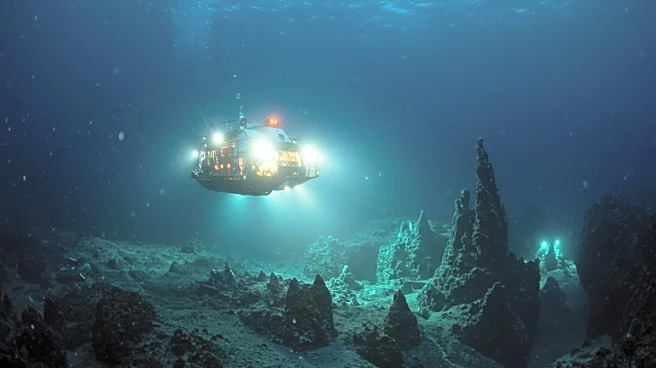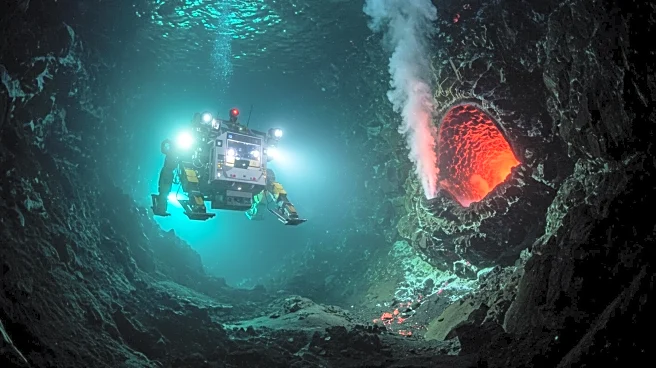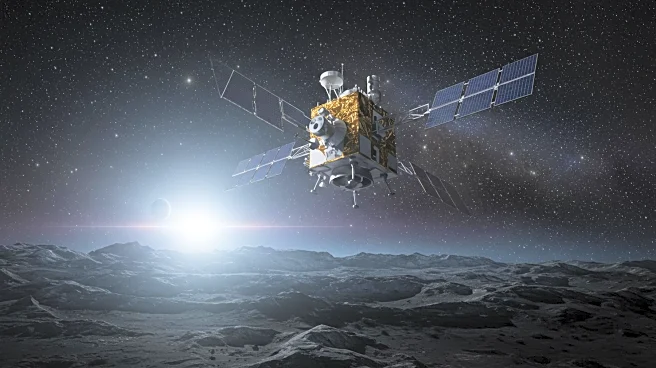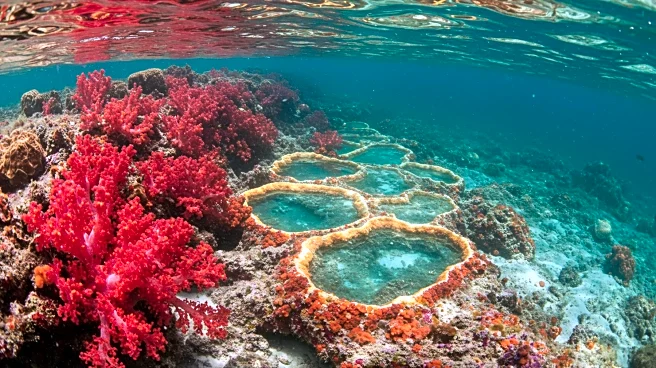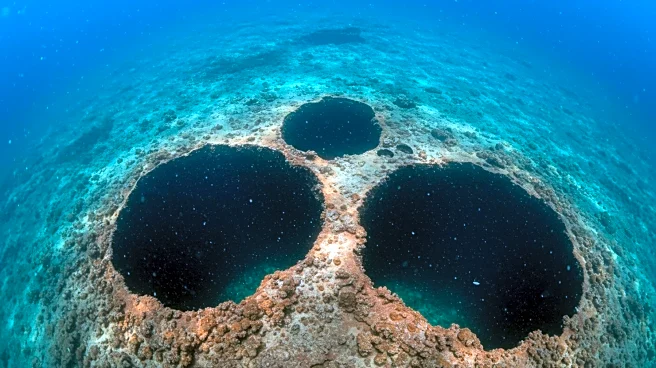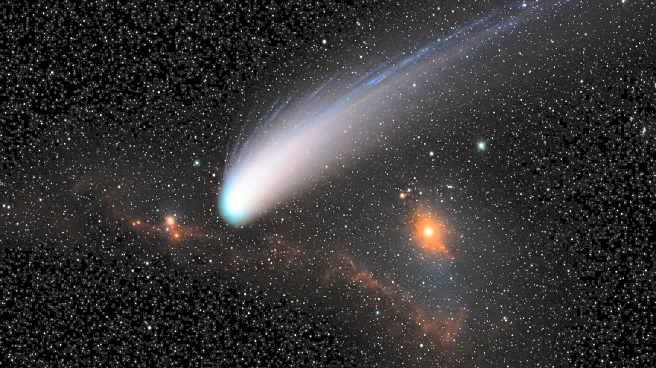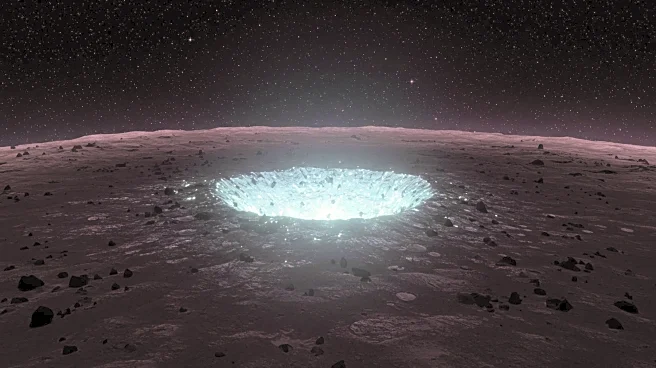What's Happening?
Researchers have discovered a massive hydrothermal system, named the Kunlun system, in the Pacific Ocean. This system, significantly larger than the Lost City system in the Atlantic, consists of 20 circular craters and spans over 4.3 square miles. The discovery, detailed in Science Advances, highlights the system's unique geological features and high hydrogen flux, which may provide insights into the origins of life on Earth. The system supports diverse marine life, including shrimp and tubeworms, which may rely on hydrogen-fueled chemosynthesis.
Why It's Important?
The Kunlun system's discovery is crucial for understanding the conditions that may have led to the emergence of life on Earth. Hydrothermal vents are considered potential sites for the origin of life due to their rich chemical environments. This finding could advance research in astrobiology, as similar systems might exist on other planets or moons, offering clues about extraterrestrial life. Additionally, the system's unique characteristics challenge existing geological theories, prompting a reevaluation of hydrogen generation processes.
What's Next?
Further exploration and study of the Kunlun system will aim to uncover more about its ecological and geological properties. Researchers will continue to investigate the system's potential to support life and its implications for understanding life's origins. This may involve deploying advanced submersibles and remote sensing technologies to gather more data.
Beyond the Headlines
The discovery emphasizes the importance of ocean exploration in uncovering Earth's hidden ecosystems. It also highlights the need for international collaboration in marine research, as understanding these systems could have implications for climate change and environmental conservation.
